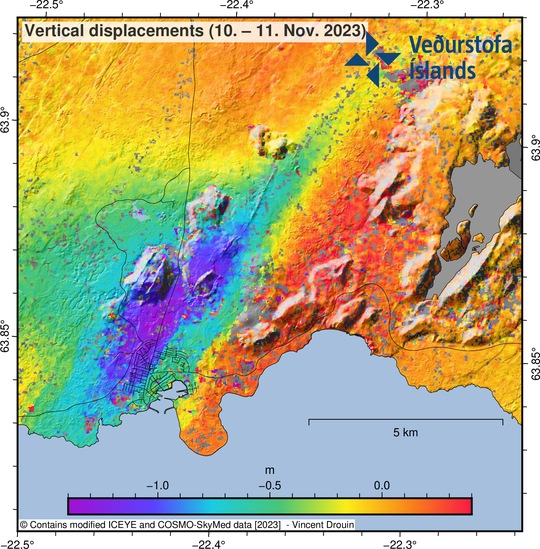[ad_1]
Iceland is on the verge of a significant volcanic eruption in the coming days, which has led to thousands of residents being evacuated from their homes since this weekend as thousands of small earthquakes struck and meter-wide cracks opened in the ground.
At issue is the Fagradalsfjall volcano on the Reykjanes Peninsula in the southwest of the country. The volcano lies about 25 miles from Iceland’s capital, Reykjavik. The volcano—and most of Iceland—runs between two tectonic plates, the movement of which leads to volcanic and seismic activity. That activity is happening now, especially along a path between the towns of Sundhnúkur and Grindavík.
The Icelandic Meteorological Office (Met Office for short) has said that there is a “significant likelihood” of a volcanic eruption in the coming days. On one day alone, November 11, more than 800 earthquakes were detected in the area since midnight.
Since then, thousands of other earthquakes have hit the southwest of the country, with ABC News reporting that 1,000 earthquakes struck the area in a 12-hour period on Sunday.

Icelandic Met Office
The good news is that should the Fagradalsfjall volcano erupt, it is not expected to lead to significant loss of life due to the fact that authorities ordered the evacuation of the town of Grindavík, which lies closest to the volcano. All 3,669 were evacuated this weekend, according to a statement from Bjarni Benediktsson, Iceland’s minister for foreign affairs.
Unfortunately, the imminent eruption is already having an economic impact on local residents. Grindavík is where Iceland’s famous Blue Lagoon thermal spa is, which attracts tourists from around the globe. It has been shut since late last week.
Another thing that many worry could be impacted by any imminent volcanic eruption is flights. A volcanic eruption of Eyjafjallajökull in Iceland in 2010 led to a cascade of flight cancellations and disruptions around the globe due to an ash cloud that formed in the atmosphere.
But such a large impact on flights is not expected to happen this time. As Lionel Wilson, emeritus professor of earth and planetary sciences at Lancaster University, explained in a statement (via CNN), “Eyjafjallajökull involved an eruption through or next to glacial ice that melted and provided water that made the eruption more explosive than it would otherwise have been, hence the high eruption plume and very wide ash dispersal.” Wilson says such a large ash dispersal should not happen this time.
Still, it’s wise to check with your airline if you have any trips scheduled across the Atlantic later this month to see if the volcanic eruption, whenever it does hit, has impacted your flight.
[ad_2]
Source link